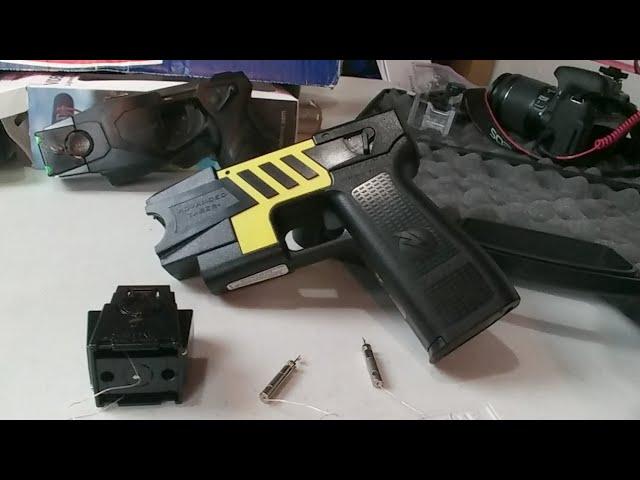Table of Contents
- Understanding the Environmental Impact of Improper Battery Disposal
- Safe Removal and Handling of Used Stun Gun Batteries
- Approved Methods for Recycling and Disposal
- Tips for Finding Local Hazardous Waste Collection Centers
- In Retrospect
Understanding the Environmental Impact of Improper Battery Disposal
When stun gun batteries are discarded carelessly, they can release toxic chemicals into the environment, contaminating soil and waterways. These batteries often contain heavy metals such as lead, cadmium, and mercury, which pose significant risks to both wildlife and human health. Once these substances leach into the ecosystem, they can cause irreversible damage to aquatic life, disrupt natural ecosystems, and even enter the food chain, affecting us directly.
Proper handling and disposal methods are essential to mitigate these hazards. Here are key reasons why you should always dispose of stun gun batteries responsibly:
- Protects soil and water from hazardous chemical contamination
- Prevents toxic substances from entering the food chain
- Supports recycling efforts, conserving valuable materials
- Reduces the risk of fires and chemical leaks in landfills
Safe Removal and Handling of Used Stun Gun Batteries
When it’s time to replace your stun gun battery, ensure that you power down and disconnect the device completely before attempting removal. Handling batteries with care prevents accidental discharge or injury. Always use insulated gloves to protect your hands from potential leaks or corrosion, and work on a clean, non-conductive surface to avoid short-circuiting. If the battery appears swollen, damaged, or leaks fluid, drastically limit handling and isolate it in a plastic container until proper disposal to avoid hazardous exposure.
After safely removing the battery, store it in a cool, dry place away from flammable materials. For transport, use a separate compartment or a non-metallic container to prevent accidental contact with metal objects. Remember to check for local regulations regarding battery disposal, as many communities have designated drop-off points or battery recycling programs. Following these precautions not only protects you but also helps minimize environmental impact through responsible disposal.
- Always wear protective gloves during removal
- Place used batteries in non-conductive containers
- Avoid puncturing or crushing the battery
- Follow municipal guidelines for hazardous waste disposal
- Never throw batteries in regular trash or recycling bins
Approved Methods for Recycling and Disposal
When it comes to handling used stun gun batteries, adhering to environmentally responsible methods is essential. Most stun gun batteries are lithium-ion or alkaline-based, both of which require special attention during disposal to prevent hazardous leaks or environmental contamination. Recycling centers equipped to accept rechargeable batteries are your best option; they ensure the batteries are processed safely and valuable materials are reclaimed. Many local electronic waste facilities and retail stores offer designated drop-off points for battery recycling. Before disposing, always check the battery for leaks or damage, and if found, handle with care by placing the battery in a non-conductive, sealed container to avoid any short circuits or chemical spills.
- Locate certified e-waste recycling centers through your local municipality or battery manufacturer websites.
- Participate in community hazardous waste collection programs, often held seasonally.
- Utilize mail-in battery recycling services provided by some brands and third-party recyclers.
- Never dispose of stun gun batteries in regular household trash or curbside bins.
Proper disposal not only safeguards your health but also aligns with local regulations designed to minimize environmental impact. Ignoring proper disposal can lead to fines or contribute to pollution due to hazardous heavy metals and chemicals within the batteries. By following approved recycling and disposal techniques, you help reduce landfill waste and promote the reuse of materials like lithium and cobalt, making a positive impact on sustainable resource management.
Tips for Finding Local Hazardous Waste Collection Centers
When searching for facilities that accept hazardous waste like used stun gun batteries, start by contacting your local government’s waste management or public works department. Many municipalities provide detailed online directories or hotlines to guide residents to authorized collection sites. Additionally, consider checking with electronic retailers or specialty battery stores, as some participate in take-back programs designed specifically for hazardous electronic components.
To streamline your search, keep an eye out for green waste initiatives or community recycling events often advertised on local council websites or social media pages. These events typically have designated drop-off points for hazardous materials. Remember to ask about any preparation requirements, such as taping battery terminals or placing them in separate containers, to ensure your batteries are safely handled and recycled.
In Retrospect
Properly disposing of used stun gun batteries is crucial not only for the environment but also for your safety. By following the tips outlined in this article-such as checking local regulations, using designated battery recycling programs, and avoiding regular trash bins-you can ensure that these potentially hazardous items are handled responsibly. Taking a few extra moments to dispose of your stun gun batteries correctly helps prevent soil and water contamination, reduces fire risks, and supports sustainable practices. Stay informed, stay safe, and make eco-friendly choices every time you replace your stun gun’s power source.Check Our Other Blogs
- StunGun – Your Trusted Source for Stun Guns, Laws, and Self-Defense Tips
- PepperSprayLaws – Your Trusted Resource for Pepper Spray Information
- StunGunLaws – Your Trusted Guide to Stun Gun Legality and Safety





